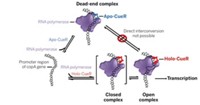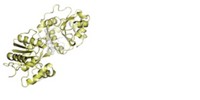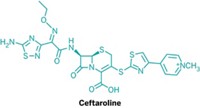Advertisement
Grab your lab coat. Let's get started
Welcome!
Welcome!
Create an account below to get 6 C&EN articles per month, receive newsletters and more - all free.
It seems this is your first time logging in online. Please enter the following information to continue.
As an ACS member you automatically get access to this site. All we need is few more details to create your reading experience.
Not you? Sign in with a different account.
Not you? Sign in with a different account.
ERROR 1
ERROR 1
ERROR 2
ERROR 2
ERROR 2
ERROR 2
ERROR 2
Password and Confirm password must match.
If you have an ACS member number, please enter it here so we can link this account to your membership. (optional)
ERROR 2
ACS values your privacy. By submitting your information, you are gaining access to C&EN and subscribing to our weekly newsletter. We use the information you provide to make your reading experience better, and we will never sell your data to third party members.
Biological Chemistry
Copper Capture
A copper-sensitive protein controls gene transcription in a who's who of pathogens
by Sarah Everts
December 11, 2006
| A version of this story appeared in
Volume 84, Issue 50

The need for copper is an Achilles' heel of pathogenic bugs, and researchers have just discovered the mechanism by which bacteria may control this vulnerability.
Bacteria require both Cu(I) and Cu(II) to survive, but too much copper creates harmful reactive oxygen species. The human immune system capitalizes on this distinction by sequestering bacterial invaders in macrophages, which have been reported to have large quantities of copper.
Biochemists at Texas A&M University and their colleagues now have identified and characterized a protein called CsoR that allows the causative agent of tuberculosis—and likely close to 200 other bacterial species, including Staphylococcus aureus, the culprit in many antibiotic-resistant hospital infections—to respond to copper (Nat. Chem. Bio., DOI: 10.1038/nchembio844).
They find that CsoR normally sits on bacterial DNA in a dimer formation until reduced copper binds the protein. The bound Cu(I) forms a trigonally coordinated complex that in turn triggers a conformational change, releasing the protein from the DNA. CsoR's departure allows the bacterial transcription machinery to turn on a selection of genes, one of which appears to encode a protein pump that kicks out copper, says David P. Giedroc, one of the researchers. When copper levels are low again, CsoR settles back on its DNA spot and blocks gene transcription again.
"This stellar work may have uncovered what amounts to the primary copper-sensing proteins in the vast majority of bacteria," comments P. John Hart, a biochemist at the University of Texas, San Antonio.
"Research about copper homeostasis and its role in biofilm formation, virulence, and infection is still in its infancy," adds Marc Solioz, from the University of Berne, in Switzerland. "CsoR provides us with a new, potentially interesting lead."
To boot, when the researchers solved the X-ray crystal structure of CsoR, they found that it has an "all α-helical structure that has not been seen for any protein before," Solioz says. "CsoR possesses a novel DNA binding fold. This may lead us to novel copper homeostatic genes and copper-regulated genes. The description of CsoR has clearly opened a new door."
Next up, Giedroc's group is trying to characterize the function of CsoR in other pathogenic bacteria and identify other genes turned on by copper-bound CsoR.






Join the conversation
Contact the reporter
Submit a Letter to the Editor for publication
Engage with us on Twitter